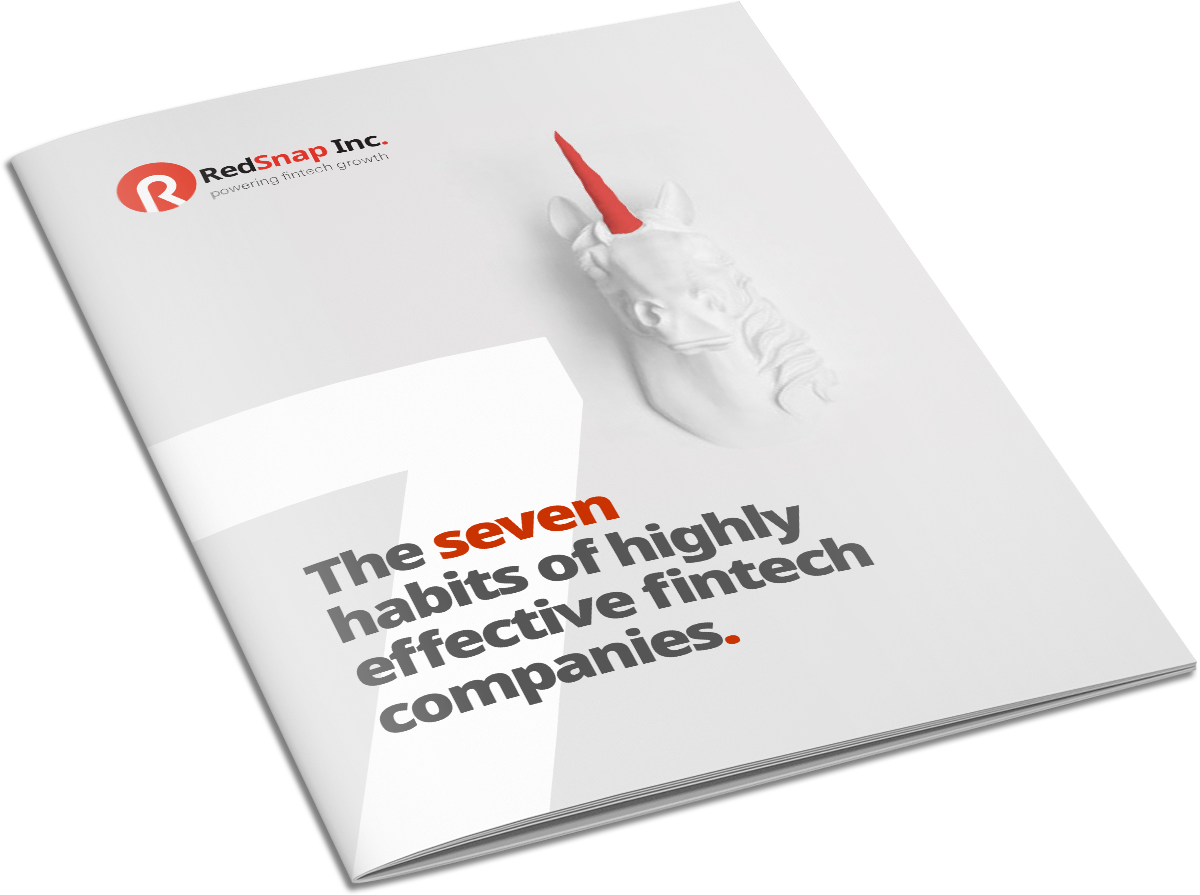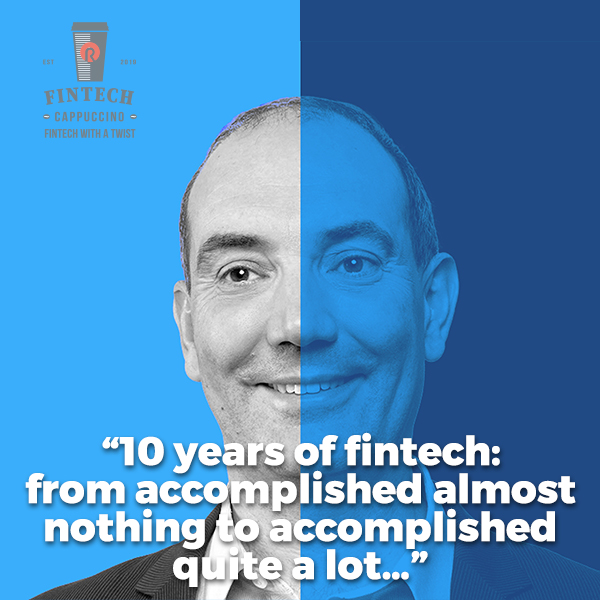The foundation of any successful go to market strategy ...
Marketing
Sales
Automation
For business leaders
For sales leaders
For marketing leaders
RedSnap Inc.
RedSnap Inc. is an agency for fintech branding, marketing & sales. We power fintech growth by aligning your marketing & sales. We develop appealing brands, impactful marketing campaigns and successful sales strategies that truly drive growth. Let’s simply say: we make sure your (potential) clients see you, like you and buy you.
For fintechs
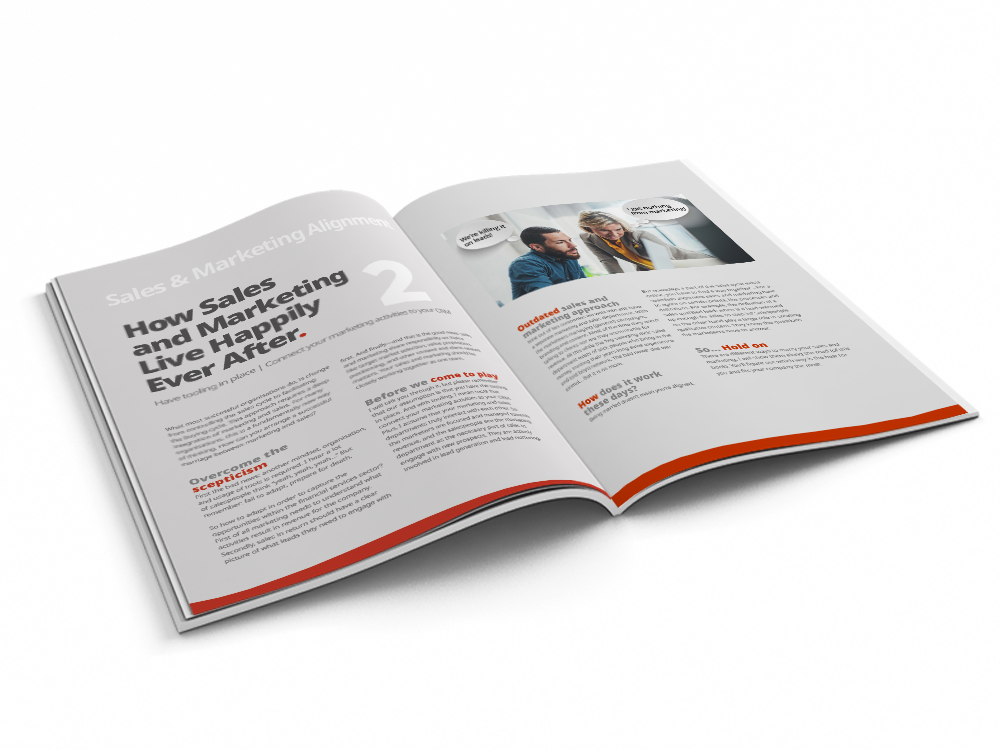
Download here.
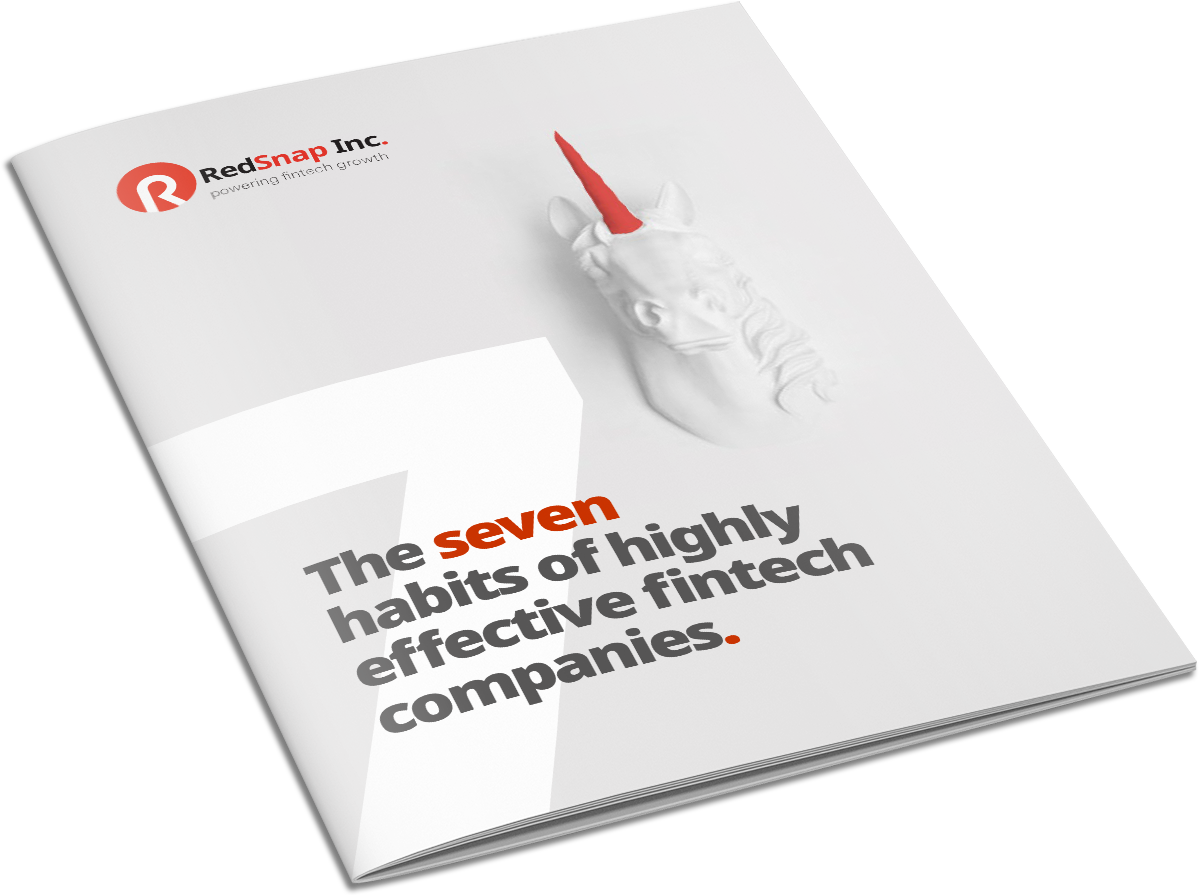
eBook 7 habits of highly effective fintech companies
Fintech
Mind the Gap!
Who do you think you are?

Welcome to our ‘mind the gap’ article about brand & identity.
Let’s first make sure we are all on the same page about the terminology because the language used is often misunderstood.
Brand: Your brand is a combination of a visual identity, tone of voice and behaviour - most visibly expressed through your logo, taglines and images used in communication campaigns.
Tempting the customer.
Your logo should reflect your brand personality, not what you do. Taglines offer the promise of something rather than explaining your offering in detail. Images should reflect the emotion you want to create in the mind of the viewer.
Campaigns are a combined marketing and sales effort towards a specific objective with an intriguing theme, delivered through a set of activities over a defined period of time. And the days of running a campaign across a single platform are over – it’s all about integration now.
Setting out your strategy.
Identity: This is your company's DNA, your beliefs and values - what you stand for. Other people will refer to it as your purpose. It basically underpins everything: your vision, mission and strategy.
The reason I am banging on about these terms is that most companies selling into the financial services sector have some of the above in place – but their approach to branding and identity is haphazard and not very joined-up.
Making them want you.
Having a strong brand is important. People want to connect to your brand, to buy into your story. Together with positioning (which I will discuss in my next blog), it provides answers to who you are, what you do, why you do it and for whom. This is not just about customers either – it is just as important that your own people connect with the brand.
The financial services industry is notoriously risk averse – banks do not work with suppliers they have never heard of, so having a strong brand is about more than vanity. Branding gives you your unique identity and your position in the market.
In the next blog in this series we will talk more about positioning. Make sure you are in the right place to find out more!
The Series
Mind the Gap.
-
From lead to deal1: The sales game has changedFacilitate the buyer's journey, change your mindset
Lack of structure and a lot of creativity. Are these the characteristics that come to mind when asked to describe a great salesperson? Not really right? Yet, the best sales people I know in the industry are not very structured, not very organised nor disciplined.
-
Sales & Marketing alignment2: How Sales and Marketing live happily ever afterHave tooling in place | Connect your marketing activities to your CRM.
In our article 'From lead to deal: The sales game has changed' we observed that successful organizations changed from controlling the sales cycle to facilitating the buying cycle. This approach requires a deep integration of marketing and sales. For many organizations this is a fundamentally new way of thinking. How can you arrange a successful marriage between marketing and sales?
-
Positioning4: Finding the right positionPositioning is all about differentiation.
Welcome to our ‘mind the gap’ article about positioning. Here we will discuss the importance of positioning and how it can help you stand out from your competitors. How many times have you walked into a bank to pitch for a piece of business only to be told ‘we already have the functionality you offer’ or ‘we solved that problem a long time ago’.
-
Value proposition5: Value proposition: the extra mileWhat problem do we solve and for whom?
In this ‘mind the gap’ article we will discuss the value proposition and how it will help your fintech sales efforts in the financial services sector. That is, if applied correctly... Going the extra mile...
-
Target markets6: Finding your target audienceHow do you enter the considerable and risk-averse market of banks?
Most Fintechs face the same challenges in finding their target audience. They have a fantastic product which solves a problem for a bank. But how do they enter the considerable and risk-averse market of banks? A challenge like this isn’t a day at the beach, or is it?
-
Buying committee7: Not a shopaholicGet to know the buying committee
Before banks buy your product (or service), you first need to convince the buying committee. The people on this committee make sure that the banks money is well spent. Here is how you deal with them in order to close a deal.
-
Competition analysis8: The illusion of the special snowflakeNever underestimate your competition
A lot of fintechs might feel the urge to skip the competition analysis. Simply because they feel they don’t have any competitors. Their product is a unique solution, so why bother with looking at what others do? Well, fintechs should worry because there is always some competition; ‘special snowflake-ness’ is an illusion.
-
Sales & Engagement approach9: Stop selling. Start giving!Just selling for the sake of it has and will never work.
It might come as a surprise to you, but focusing on selling is sometimes the worst thing a sales organisation can do. A much better approach is to focus on the problem you solve for your customers and how can you help them navigate the deal through their own organisation.
-
Pipeline Optimization10: Hot or not?Optimize your sales pipeline and find the most effective way from lead to deal.
Phrases like 'pipeline optimization' that we use in our Sales & Marketing businesses do not always sound exciting. Nevertheless, the topic of pipeline optimization is hot as can be! If you optimize your sales pipeline, you'll find the most effective way from lead to deal. Sounds like a plan, but how do you do it?
-
Sales Enablement11: Help your sales star winSales enablement is everything you need to do to enable your sales people to sell more
Let's have a look at 'Sales Enablement’. There seem to be many misunderstandings about this topic, but most companies don't even notice it.
-
Winning Sales12: Winning Sales is not everything: it is the only thingIt is not that companies forget about sales, but rather that they don't know how to play the sales game.
Sales is like playing tennis. Nobody cares about how many balls you hit, or services you make, how hard you hit the ball or how many miles you ran on the court. At Wimbledon, it is all about the performance: winning the game. And that's the same with winning sales.
The Ultimate Guide to Winning Sales in Fintech.
In this e-book, you'll learn about the one important question you need to focus on: how to win the market, as a team. Get your own copy and conquer the fintech world!
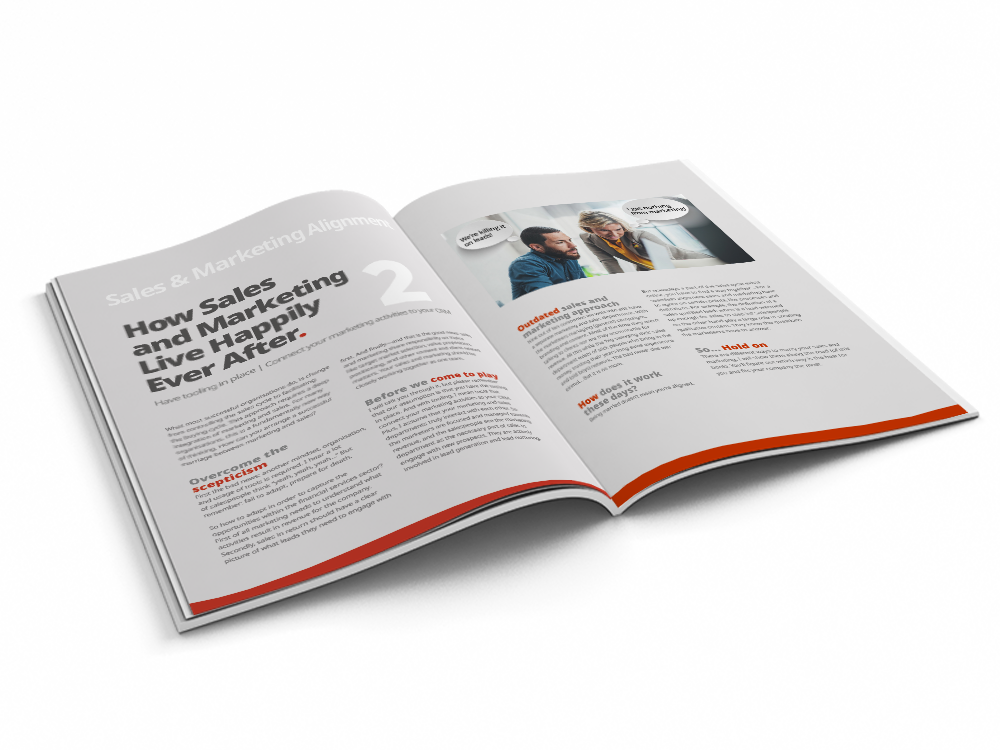
The 7 habits of highly effective fintechs
What are the 7 key habits that are continuously practised by successful fintechs? Follow the habits outlined in this e-book and you will be well on the way to growth.
